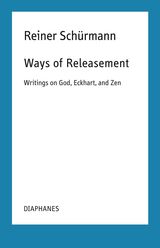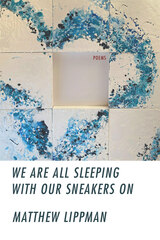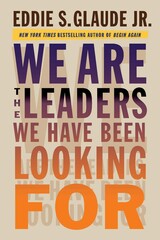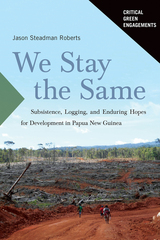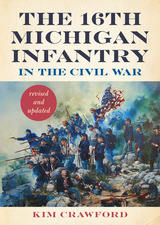
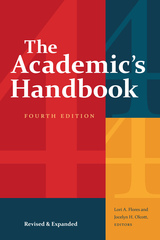
Contributors. Luis Alvarez, Steven Alvarez, Eladio Bobadilla, Genevieve Carpio, Marcia Chatelain, Ernesto Chávez, Miroslava Chávez-García, Nathan D. B. Connolly, Jeremy V. Cruz, Cathy N. Davidson, Sarah Deutsch, Brenda Elsey, Sylvanna M. Falcón, Michelle Falkoff, Kelly Fayard, Matthew W. Finkin, Lori A. Flores, Kathryn J. Fox, Frederico Freitas, Neil Garg, Nanibaa’ A. Garrison, Joy Gaston Gayles, Tiffany Jasmin González, Cynthia R. Greenlee, Romeo Guzmán, Lauren Hall-Lew, David Hansen, Heidi Harley, Laura M. Harrison, Sonia Hernández, Sharon P. Holland, Elizabeth Q. Hutchison, Deborah Jakubs, Bridget Turner Kelly, Karen Kelsky, Stephen Kuusisto, Magdalena Maczynska, Sheila McManus, Cary Nelson, Jocelyn H. Olcott, Rosanna Olsen, Natalia Mehlman Petrzela, Charles Piot, Bryan Pitts, Sarah Portnoy, Laura Portwood-Stacer, Yuridia Ramirez, Meghan K. Roberts, John Elder Robison, David Schultz, Lynn Stephen, James E. Sutton, Antar A. Tichavakunda, Keri Watson, Ken Wissoker, Karin Wulf
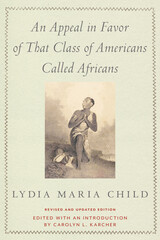
Published in Boston in 1833, Lydia Maria Child’s An Appeal in Favor of That Class of Americans Called Africans provided the abolitionist movement with its first full-scale analysis of race and enslavement. Controversial in its own time, the Appeal surveyed the institution of slavery from historical, political, economic, legal, racial, and moral perspectives and advocated for the immediate emancipation of the enslaved without compensation to their enslavers. By placing American slavery in historical context and demonstrating how slavery impacted—and implicated—Americans of all regions and races, the Appeal became a central text for the abolitionist movement that continues to resonate in the present day.
This revised and updated edition is enhanced by Carolyn L. Karcher’s illuminating introduction, a chronology of Child’s life, and a list of books for further reading.
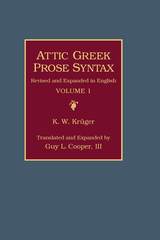
The language of classical Greek literature has been extensively studied since the Renaissance, and the most generally admired approach to Greek grammar and syntax has long been K. W. Krüger's Griechische Sprachlehre. In this translation Guy L. Cooper III accepts Krüger's simple and transparent organization, but greatly expands the substance of the earlier work by increasing the total number of citations from the original texts. Research since 1875, especially the contributions of Basil Lanneau Gildersleeve, is incorporated so as to create a reference work, in English, which covers the full range of this complex subject.
Krüger's original paragraph numbering has been maintained so that references in previously published works can be followed directly in the new work. However, every paragraph and chapter has been revised and expanded, opening up new subheadings within Krüger's format. The English has moved away from Krüger's laconic style to a more flowing, readable presentation, without jargon and unexplained technical language. A complete index of passages cited and the impressive number of citations make the work a running syntactic commentary on the whole range of Attic prose literature. The net result is a new comprehensive reference work, an essential reference for libraries and personal collections alike.
Guy L. Cooper III is Professor Emeritus of Classics, University of North Carolina at Asheville.
Volume 2
cloth ISBN 0-472-10844-1
Set of Volumes 1 & 2
cloth ISBN 0-472-10844-1
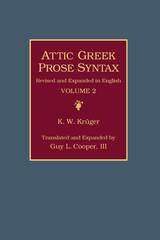
The language of classical Greek literature has been extensively studied since the Renaissance, and the most generally admired approach to Greek grammar and syntax has long been K. W. Krüger's Griechische Sprachlehre. In this translation Guy L. Cooper III accepts Krüger's simple and transparent organization, but greatly expands the substance of the earlier work by increasing the total number of citations from the original texts. Research since 1875, especially the contributions of Basil Lanneau Gildersleeve, is incorporated so as to create a reference work, in English, which covers the full range of this complex subject.
Krüger's original paragraph numbering has been maintained so that references in previously published works can be followed directly in the new work. However, every paragraph and chapter has been revised and expanded, opening up new subheadings within Krüger's format. The English has moved away from Krüger's laconic style to a more flowing, readable presentation, without jargon and unexplained technical language. A complete index of passages cited and the impressive number of citations make the work a running syntactic commentary on the whole range of Attic prose literature. The net result is a new comprehensive reference work, an essential reference for libraries and personal collections alike.
Guy L. Cooper III is Professor Emeritus of Classics, University of North Carolina at Asheville.

The full story of barbecue in the United States had been virtually untold before Robert F. Moss revealed its long, rich history in his 2010 book Barbecue: The History of an American Institution. Moss researched hundreds of sources—newspapers, letters, journals, diaries, and travel narratives—to document the evolution of barbecue from its origins among Native Americans to its present status as an icon of American culture. He mapped out the development of the rich array of regional barbecue styles, chronicled the rise of barbecue restaurants, and profiled the famed pitmasters who made the tradition what it is today.
Barbecue is the story not just of a dish but also of a social institution that helped shape many regional cultures of the United States. The history begins with British colonists’ adoption of barbecuing techniques from Native Americans in the 17th and 18th centuries, moves to barbecue’s establishment as the preeminent form of public celebration in the 19th century, and is carried through to barbecue’s ubiquitous standing today.
From the very beginning, barbecues were powerful social magnets, drawing together people from a wide range of classes and geographic backgrounds. Barbecue played a key role in three centuries of American history, both reflecting and influencing the direction of an evolving society. By tracing the story of barbecue from its origins to today, Barbecue: The History of an American Institution traces the very thread of American social history.
Moss has made significant updates in this new edition, offering a wealth of new historical research, sources, illustrations, and anecdotes.
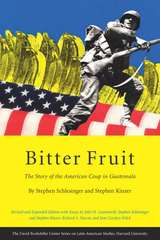

The advent of chemical or pharmacological therapies has had an enormous impact on the treatment of psychiatric illness. For the chemotherapy to be effective, however, the clinician must take into account many factors in addition to recognition of a syndrome and selection of an appropriate agent and dose. In this extensively revised and expanded edition of a widely used book, Ross Baldessarini concentrates on providing rational, scientific underpinnings for the treatment of patients. In doing so, he bridges the gap between biology, psychology, and clinical practice.
To provide the most up-to-date coverage of the actions and use of psychotropic agents, Professor Baldessarini has enlarged the text to nearly twice its original length and has added sixty-three new tables. More basic preclinical pharmacology is included to guide the thoughtful use of medication. In addition to summarizing this basic knowledge, the text reviews the indications for each drug, the kinds of patients most likely to respond, and side effects and contraindications, and provides summaries of clinical research findings on which rational clinical practice rests.
A chapter is devoted to each of the principal classes of psychotropic drugs: antipsychotic agents, lithium salts and other antimanic agents, antidepressant agents, and antianxiety drugs. Within each chapter is a new section that surveys the future of the field and examines new procedures, theories, and agents. A final chapter covers more general topics such as psychosocial, ethical, and legal aspects of practice in the administration of drugs, as well as the emerging topics of geriatric and pediatric psychopharmacology--material not readily available elsewhere.

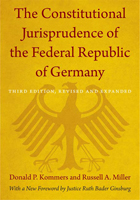
Compared to previous editions of The Constitutional Jurisprudence of the Federal Republic of Germany, this third edition more closely tracks Germany's Basic Law and, therefore, the systematic approach reflected in the most-respected German constitutional law commentaries. Entirely new chapters address the relationship between German law and European and international law; social and economic rights, including the property and occupational rights cases that have emerged from Reunification; jurisprudence related to issues of equality, particularly gender equality; and the tension between Germany's counterterrorism efforts and its constitutional guarantees of liberty. Kommers and Miller have also updated existing chapters to address recent decisions involving human rights, federalism, European integration, and religious liberty.
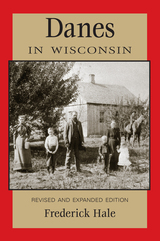
Wisconsin Territory's first Dane arrived in 1829, and by 1860 the state's Danish-born population had reached 1,150. Yet these newcomers remained only a small segment of Wisconsin's increasingly complex cultural mosaic, and the challenges of adapting to life in this new land shaped the Danish experience in the state. In this popular book, now revised and expanded with additional historical photos and documents, Frederick Hale offers a concise introduction to Wisconsin's Danish settlers, exploring their reasons for leaving their homeland, describing their difficult journeys, and examining their adjustments to life on Wisconsin soil.
New to this edition are the selected letters of Danish immigrant Andrew Frederickson. These compelling documents, written over a 40-year span, capture the personal observations of one Dane as he made a new life in Wisconsin.

In this fully revised second edition of the classic guide Designing Gardens with Flora of the American East, gardening expert Carolyn Summers draws on the most recent research on sustainable landscaping. She is joined in this edition by her daughter, landscape designer Kate Brittenham, offering an intergenerational dialogue about the importance of using indigenous plants that preserve insect and bird habitats. The practical information they provide is equally useful for home gardeners and professionals, including detailed descriptions of keystone trees, shrubs, perennials, vines, and grasses that are native to the eastern United States. Accompanied by entirely new illustrations and updated plant lists, they offer chic yet eco-friendly landscape designs fully customized for different settings, from suburban yards to corporate office parks.
The states covered in this book are CT, DE, IA, IL, IN, KY, MA, MD, ME, MI, MN, MO, NC, NH, NJ, NY, OH, PA, RI, TN, VA, VT, WI, and WV, as well as southern Quebec and Ontario.
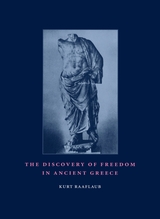
To find out, Raaflaub analyses ancient Greek texts from Homer to Thucydides in their social and political contexts. Archaic Greece, he concludes, had little use for the idea of political freedom; the concept arose instead during the great confrontation between Greeks and Persians in the early fifth century BCE. Raaflaub then examines the relationship of freedom with other concepts, such as equality, citizenship, and law, and pursues subsequent uses of the idea—often, paradoxically, as a tool of domination, propaganda, and ideology.
Raaflaub's book thus illuminates both the history of ancient Greek society and the evolution of one of humankind's most important values, and will be of great interest to anyone who wants to understand the conceptual fabric that still shapes our world views.
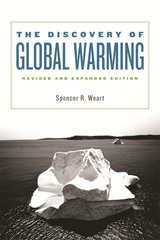
The award-winning book is now revised and expanded.
In 2001 an international panel of distinguished climate scientists announced that the world was warming at a rate without precedent during at least the last ten millennia, and that warming was caused by the buildup of greenhouse gases from human activity. The story of how scientists reached that conclusion—by way of unexpected twists and turns—was the story Spencer Weart told in The Discovery of Global Warming. Now he brings his award-winning account up to date, revised throughout to reflect the latest science and with a new conclusion that shows how the scientific consensus caught fire among the general world public, and how a new understanding of the human meaning of climate change spurred individuals and governments to action.
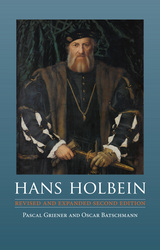

A classic and invaluable reference work. Soon after its initial publication, the Harvard Dictionary of Music by Willi Apel was firmly established as a standard and essential resource for everyone concerned with music. The product of exceptional scholarship, it was praised as being comprehensive, concise, authoritative, scholarly, and enjoyable. Leopold Stokowski wrote, “I so often consult your dictionary of music, and with such never failing enlightenment, that I must offer you my thanks for your unique book, so profound and so broad in scope… The vast scholarship…is of immeasurable value to the whole world of music.”
For this second edition the dictionary has been thoroughly revised, updated, and substantially enlarged. Apel and eighty-eight other eminent music scholars have contributed new articles and revised old ones completely. The already comprehensive list of accurate definitions has grown measurably and it now even includes nothus, pyiba, and merengue.
In the greatly expanded coverage of ethnomusicology, cumbia—an Afro-Panamanian dance form—and Vietnam are only two of the new entries. Additionally, all the general information about individual countries has been revised and the discussion of both theory and history has been amply increased. Developments of the last two decades are given special attention with particular emphasis on compositional techniques, including electronic music and serial music. Individual compositions, representative of every type from every era, are described. The bibliography following each article, a unique feature of the first edition, has been updated and expanded. There are fifty percent more illustrations than in the first edition, including explicit drawings of instruments, clear music examples, diagrams, charts and a full-page outline of the history of music.
An extensive list of the most important music libraries and collections throughout the world with summaries of their significant musical holdings is a valuable part of the dictionary. The section on historical editions now lists fifty-three collections of music and briefly describes each volume within each collection.
The Harvard Dictionary of Music, Second Edition, Revised and Enlarged, is the result of imaginative, specialized, modern, and reliable music scholarship. Containing nearly 1,000 pages of precise and accessible information on all musical subjects, it offers over fifty percent more material than the first edition. It is essential not only to the scholar of music, the professional performer, and the practicing amateur, but to everyone who has ever anticipated the pleasure of a weekly musical broadcast, purchased a favorite recording, or truly enjoyed a concert.

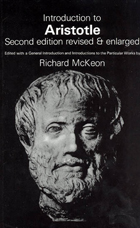
Aristotle's contribution to Western civilization is enormous. Our language, our distinctions, our ways of thinking, all are profoundly affected by his work. Since an understanding of Aristotle is indispensable for the understanding of our own culture, the ready availability of his work is crucial.
This collection, for students and general readers alike, provides in one volume Posterior Analytics (Logic), De Anima (On the Soul), Nicomachean Ethics, and Poetics, complete and unabridged, together with generous selections from Physics, On the Parts of Animals, Metaphysics, Politics, and Rhetoric. These works, together with Professor McKeon's revised introductions, provide a convenient and thorough exposure to the works of Aristotle and to the structural interrelations in the Aristotelian system of thought.
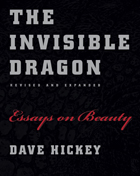
The Invisible Dragon made a lot of noise for a little book When it was originally published in 1993 it was championed by artists for its forceful call for a reconsideration of beauty—and savaged by more theoretically oriented critics who dismissed the very concept of beauty as naive, igniting a debate that has shown no sign of flagging.
With this revised and expanded edition, Hickey is back to fan the flames. More manifesto than polite discussion, more call to action than criticism, The Invisible Dragon aims squarely at the hyper-institutionalism that, in Hickey’s view, denies the real pleasures that draw us to art in the first place. Deploying the artworks of Warhol, Raphael, Caravaggio, and Mapplethorpe and the writings of Ruskin, Shakespeare, Deleuze, and Foucault, Hickey takes on museum culture, arid academicism, sclerotic politics, and more—all in the service of making readers rethink the nature of art. A new introduction provides a context for earlier essays—what Hickey calls his "intellectual temper tantrums." A new essay, "American Beauty," concludes the volume with a historical argument that is a rousing paean to the inherently democratic nature of attention to beauty.
Written with a verve that is all too rare in serious criticism, this expanded and refurbished edition of The Invisible Dragon will be sure to captivate a new generation of readers, provoking the passionate reactions that are the hallmark of great criticism.

You'll discover:
· how to implement writing as a part of daily life with family and friends;
· processes and invitations fit for young writers;
· strategies for connecting writing to math and coding;
· writing materials and technologies; and
· creative and practical writing ideas, from fiction, nonfiction, and videos to blogs and emails.
In order to connect writing to today's digital revolution, veteran educators Sharon A. Edwards, Robert W. Maloy, and Torrey Trust reveal how digital tools can inspire children to write, and a helpful companion website brings together a range of resources and technologies. This essential book offers enjoyment and inspiration to young writers!
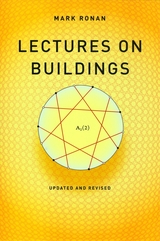
In mathematics, “buildings” are geometric structures that represent groups of Lie type over an arbitrary field. This concept is critical to physicists and mathematicians working in discrete mathematics, simple groups, and algebraic group theory, to name just a few areas.
Almost twenty years after its original publication, Mark Ronan’s Lectures on Buildings remains one of the best introductory texts on the subject. A thorough, concise introduction to mathematical buildings, it contains problem sets and an excellent bibliography that will prove invaluable to students new to the field. Lectures on Buildings will find a grateful audience among those doing research or teaching courses on Lie-type groups, on finite groups, or on discrete groups.
“Ronan’s account of the classification of affine buildings [is] both interesting and stimulating, and his book is highly recommended to those who already have some knowledge and enthusiasm for the theory of buildings.”—Bulletin of the London Mathematical Society

Praised as "one of those rare scientific books that can be read both for pleasure and instruction" when it was first published, The Life of Yeasts now appears in a new edition incorporating the exciting developments of the last decade. Nowhere else is there an introduction to this complex group of organisms that is as succinct, clear, and useful. Reviewing the first edition in Nature, A. H. Cook welcomed it as a "simple but wide-ranging account of a field which for various reasons has hitherto mostly been described only in a few specialized texts or in many respects only piecemeal in original publications."
This book is written for the nonspecialist who wishes to understand the yeasts, but not necessarily to become an expert on them. The new edition covers recent and major advances in the morphology, physiology, genetics, and ecology of these organisms, which have long been important in commerce and medicine and are ever more studied in the laboratory as prototypical eukaryotes.
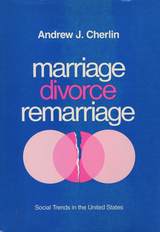
With roller coaster changes in marriage and divorce rates apparently leveling off in the 1980s, Andrew Cherlin feels that the time is right for an overall assessment of marital trends. His graceful and informal book surveys and explains the latest research on marriage, divorce, and remarriage since World War II.
Cherlin presents the facts about family change over the past thirty-five years and examines the reasons for the trends that emerge. He views the 1950s, when Americans were marrying and having children early and divorcing infrequently, as the aberration, and he discusses why this period was unusual. He also explores the causes and consequences of the dramatic changes since 1960—increases in divorce, remarriage, and cohabitation, decreases in fertility—that are altering the very definition of the family in our society. He concludes with a discussion of the increasing differences in the marital patterns of black and white families over the past few decades.
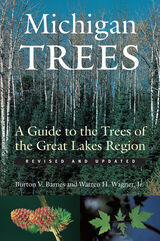
Now in its tenth decade of publication, Michigan Trees has been, since it was first introduced in 1913, the must-have reference book for anyone who wants to know about the trees of this unique North American region.
In this new and updated edition, several new species have been added to the lineup, as well as sections on tree ecology and fall color. Written and illustrated in a style that appeals at once to academic botanists and armchair arborphiles alike, Michigan Trees gives readers everything they need to know for identifying trees in the Great Lakes state. Included with each description are fascinating notes and asides (for example, this tidbit on the jack pine: "Parklike or savanna stands in north-central Michigan are prime habitat for the rare Kirtland's warbler that breeds nowhere else in the world."). Also includes a tree key and identification section illustrated with elegantly simple line drawings that reveal the tiny, signature details that make each tree unique.
Burton V. Barnes is Professor of Forestry at the University of Michigan. Formerly a research forester, he is best known for his research and publications in forest ecology and forest genetics.
Warren H. Wagner, Jr. was a world authority on ferns. He had been Professor Emeritus of Botany and Natural Resources at the University of Michigan before his death at the age of 80 in 2000.

The most important public health problem of our time—AIDS—is also the most shrouded in myth and misinformation. To bring the facts out of the shadows of fear and hysteria, the first edition of Mobilizing against AIDS was published in 1986. This new edition, nearly double the size of the first, interprets the results of the latest research on the disease and possible methods of treatment.
For the foreseeable future the vast majority of AIDS cases will occur among groups that have already experienced major losses: homosexual and bisexual men, intravenous drug abusers, people who received blood or blood products before techniques were developed to safeguard the blood supply, heterosexual partners of those at recognized risk of HIV infection, and infants born to infected mothers. Mobilizing against AIDS examines new data on the growth of the epidemic within these groups, as well as on successful and failed attempts to stop the spread of the disease. In addition, it explores the growing problem of AIDS among the urban poor.
This new edition also presents up to date information on how the disease affects the body, including damage to immune cells, bone marrow cells, skin cells, and cells of the cervix and colon. It contains additional discussions of treatment (particularly drug therapy and prospects for a vaccine) and a searching examination of the implications of societal and individual stress caused by the epidemic. In summarizing the events that have taken place in the last few years, Eve K. Nichols has worked closely with the Institute of Medicine, National Academy of Sciences and other key players in the battle against AIDS. Maintaining the clear and nontechnical style that has been so widely acclaimed, Nichols has forged an extraordinarily thorough synthesis that carries an authoritative stamp, ensuring that this new edition will be an indispensable resource for everyone concerned with AIDS and its treatment.

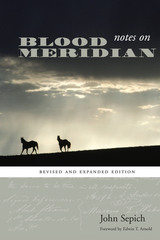
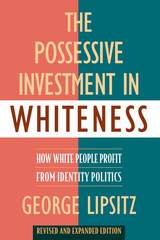
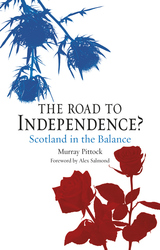
Pittock charts Scotland’s economic, cultural, and social histories, focusing on the history and cultural impact of Scottish cities and industries, the role of multiculturalism in contemporary Scottish society, and the upheaval of devolution, including the 2007 election of Scotland’s first nationalist government. From the architecture and art of Edinburgh and Glasgow to the Scottish Parliament, the book investigates every aspect of modern Scottish society to explain the striking rise of Scottish nationalism since 1960. Now brought up to date and with a new foreword by Scottish First Minister Alex Salmond, The Road to Independence? reveals a new perspective on modern Scottish culture on the eve of Scotland’s referendum on independence from the UK in September 2014.
“Enormously informative and often thought-provoking. . . . This book could hardly be improved on: it’s lively, lucid, witty, beautifully written.”—Scotsman
“A well-arranged exposition of the various pressures and stresses Scottish society has faced and faces still.”—Diplomat

Long recognized as the best and most comprehensive work on its subject, Brown’s fine book is now thoroughly revised and updated. It provides a comprehensive treatment of Russian literature, including underground and émigré writings, from 1917 to the early 1980s.
Every stage in the evolution of Russian literature since 1917, every major author, all the important literary organizations, groups, and movements, are sharply outlined, with a wealth of often unfamiliar detail and a notable economy of means. Critical essays on Mayakovsky, Zamyatin, Olesha, Pasternak, Brodsky, Solzhenitsyn, Rasputin, Erofeev, and many others offer sophisticated formal and thematic analyses of a very large array of literary masterpieces.
The book examines and makes intelligible the persistent conflict between the writer and the state, between the literary artist’s urge for untrammeled self-expression and the pervasive control of intellectual activity exercised by the Soviet government. Chapters on “The Levers of Control under Stalin,” “The First Two Thaws,” “Into the Underground,” and “Solzhenitsyn and the Epic of the Camps” reveal the conditions under which Russian literature was produced in various periods and investigate the forces that drove an important segment of the literature into clandestine publication or into exile. “Exiles, Early and Late” deals with some of the leading figures in émigré literature and examines the condition of exile as an influence on literary creation. “The Surface Channel” describes and analyzes a number of significant works published aboveground in the Soviet Union during the sixties and seventies. Brown abandons the old distinction between Soviet and émigré literature, treating all Russian writing as part of a single stream, divided since 1917 into two currents not totally separate but subtly interrelated.


The certainty that deep down we are all schlemiels is perhaps what makes America love an inept ball team or a Woody Allen who unburdens his neurotic heart in public.
In this unique, revised history of the schlemiel, Sanford Pinsker uses psychological, linguistic, and anecdotal approaches, as well as his considerable skills as a spritely storyteller, to trace the schlemiel from his beginnings in the Old Testament through his appearance in the nineteenth-century literature of Mendele Mocher Seforim and Sholom Aleichem to his final development as the beautiful loser in the works of Isaac Bashevis Singer, Bernard Malamud, Saul Bellow, Philip Roth, and Woody Allen. Horatio Alger might have once been a good emblem of the American sensibility, but today Woody Allen’s anxious, bespectacled punin (face) seems closer, and truer, to our national experience. His urban, end-of-the-century anxieties mirror—albeit in exaggeration—our own.
This expanded study of the schlemiel is especially relevant now, when scholarship of Yiddish and American Jewish literature is on the increase. By sketching the family tree of that durable anti-hero the schlemiel, Pinsker proves that Jewish humor is built upon the very foundations of the Jewish experience. Pinsker shows the evolution of the schlemiel from the comic butt of Yiddish jokes to a literary figure that speaks to the heart of our modern problems, and he demonstrates the way that Yiddish humor provides a sorely needed correction, a way of pulling down the vanities we all live by.
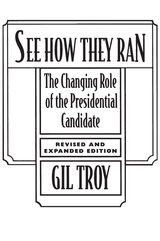
Many Americans feel that presidentials have become inordinately expensive, shallow, and vulgar. The seemingly endless contest even appears to discourage the most suitable candidates from seeking the highest office in the land. Frustrated, we long for the good old days of dignified campaigns and worthy candidates. As Troy's fascinating history demonstrates, however, they never existed.
This definitive volume examines every presidential campaign from 1840 to the present to explore why candidates campaign as they do, and why Americans complain about it. Troy reveals what our presidential campaigns tell us about American democracy itself.
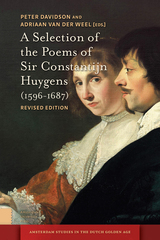
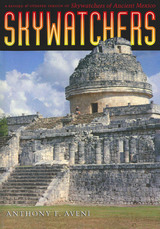
Skywatchers of Ancient Mexico helped establish the field of archaeoastronomy, and it remains the standard introduction to this subject. Combining basic astronomy with archaeological and ethnological data, it presented a readable and entertaining synthesis of all that was known of ancient astronomy in the western hemisphere as of 1980.
In this revised edition, Anthony Aveni draws on his own and others' discoveries of the past twenty years to bring the Skywatchers story up to the present. He offers new data and interpretations in many areas, including:
- The study of Mesoamerican time and calendrical systems and their unprecedented continuity in contemporary Mesoamerican culture
- The connections between Precolumbian religion, astrology, and scientific, quantitative astronomy
- The relationship between Highland Mexico and the world of the Maya and the state of Pan-American scientific practices
- The use of personal computer software for computing astronomical data
With this updated information, Skywatchers will serve a new generation of general and scholarly readers and will be useful in courses on archaeoastronomy, astronomy, history of astronomy, history of science, anthropology, archaeology, and world religions.
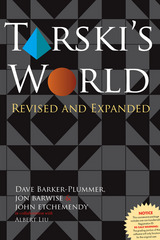
A brand new feature in this revised and expanded edition is student access to Grade Grinder, an innovative Internet-based grading service that provides accurate and timely feedback to students whenever they need it. Students can submit solutions for the program’s more than 100 exercises to the Grade Grinder for assessment, and the results are returned quickly to the students and optionally to the teacher as well. A web-based interface also allows instructors to manage assignments and grades for their classes.
Intended as a supplement to a standard logic text, Tarski’s World is an essential tool for helping students learn the language of logic.
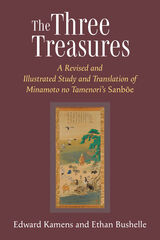

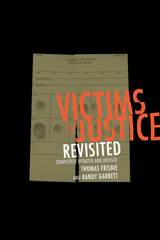
The kidnapping of Jeanine Nicarico from her quiet suburban home and her brutal slaying sparked a public demand for justice. But the longer authorities strove to execute Cruz and the two other men, the more evidence emerged that the defendants were innocent-and that the death penalty process in America itself was deeply flawed.
Here is the start of a chain reaction that led to a moratorium on the death penalty in Illinois and the clearing out of Death Row, as Illinois Governor George Ryan-worried about unfairness in death penalty convictions-granted clemency to all those awaiting execution. This is a detailed study of a nationally known case that should be cited whenever serious scholars examine how capital cases are prosecuted in America. Here is the most thorough investigation yet published into the background of the man who-after Cruz already was on Death Row-claimed to be the real killer.
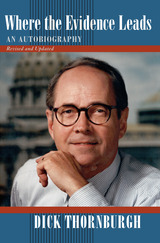
Set in any era, Dick Thornburgh’s brilliant career would merit study and retelling. He was the first Republican elected to two successive terms as governor of Pennsylvania. He served in the Department of Justice under five presidents, including three years as attorney general for Presidents Reagan and Bush. As undersecretary-
general of the United Nations, he was the highest-ranking American in the organization and a strong voice for reform.
Nationally, Thornburgh is best remembered for his three years as attorney general, when he managed some of the most vexing legal matters of the modern age: the Savings and Loan and BCCI scandals; controversy over the “Iraqgate” and INSLAW investigations and the Wichita abortion clinic protests; and prosecutions of Michael Milken, Manuel Noriega, and Marion Barry, as well as those involved in the Pan Am Flight 103 bombing, the Exxon Valdez oil spill, and the Rodney King beating.
As governor of Pennsylvania, he faced the nation’s worst nuclear accident, weeks after his inauguration in 1979. Thornburgh's cool-headed response to the Three Mile Island disaster is often studied as a textbook example of emergency management. His historic 1992 battle against Harris Wofford for the late John Heinz III’s Senate seat is one of several political campaigns, vividly recalled, that reveal the inner workings of the commonwealth’s political machinery.
Thornburgh reveals painful details of his personal life, including the automobile accident that claimed the life of his first wife and permanently disabled his infant son. He presents a frank analysis of the challenges of raising a family as a public figure, and tells the moving story of his personal and political crusade that culminated in the Americans with Disabilities Act of 1990.
This revised and updated edition includes a new chapter devoted to the highlights of Thornburgh’s continuing career. He offers fascinating insights into his experiences as Bankruptcy Court Examiner for the WorldCom proceedings, leading the investigation into the CBS News report on President George W. Bush’s military service record, representing Allegheny County coroner Cyril Wecht in a trial over alleged misuse of public office, and as part of the K&L Gates team consulted by Chiquita Brands during a federal investigation over payments made to Colombian guerillas and paramilitaries to protect banana growers.
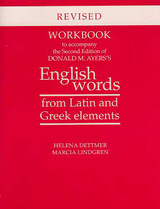
The Workbook has now been revised to make it more relevant and useful. It features a new dictionary exercise and word analysis exercises, the replacement of true-false exercises that have caused the most difficulty for students, and the elimination of archaic words and other items that have become dated. The authors have also improved the clarity of the instructions for individual exercises, in some cases adding notes or providing sample answers. As part of the revised front matter, there is a new introduction written just for students to help them get the most out of the workbook. English Words and the Workbook have met with unqualified success in English and Classics courses at both the advanced secondary and college levels. This revision of the Workbook helps to ensure the continuing relevance of the roots approach to vocabulary building for tomorrow’s students.
READERS
Browse our collection.
PUBLISHERS
See BiblioVault's publisher services.
STUDENT SERVICES
Files for college accessibility offices.
UChicago Accessibility Resources
home | accessibility | search | about | contact us
BiblioVault ® 2001 - 2024
The University of Chicago Press


